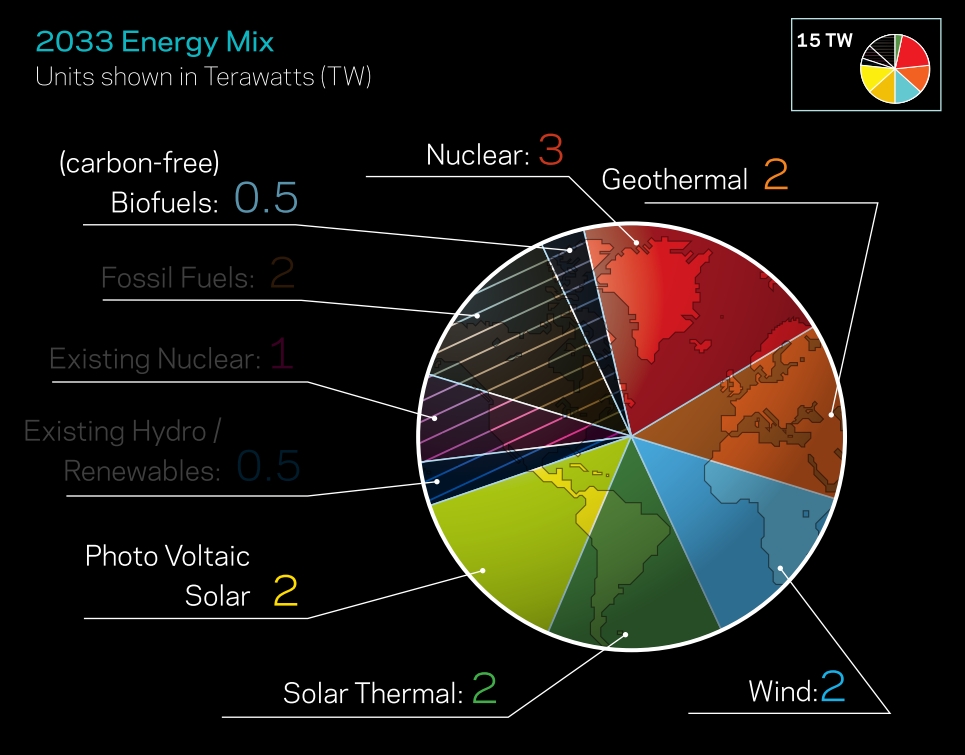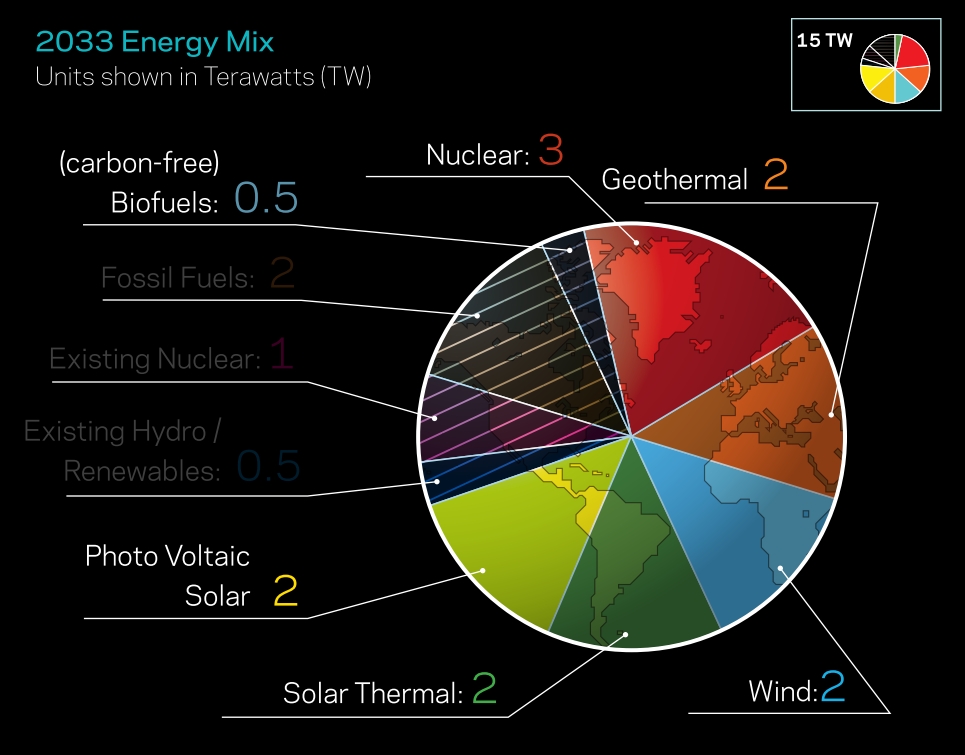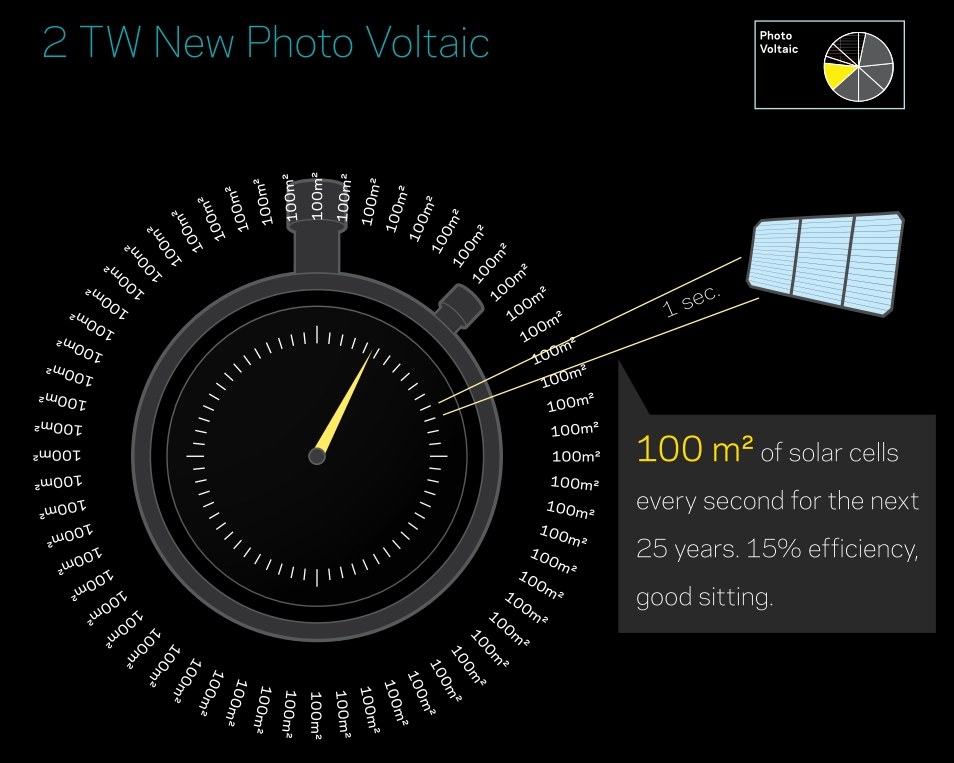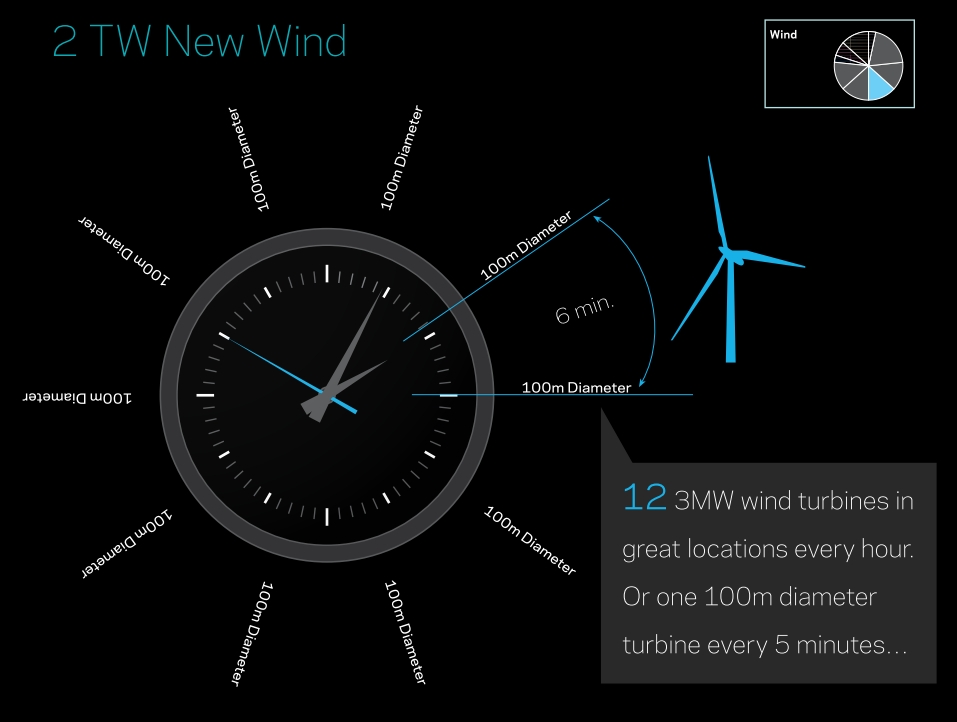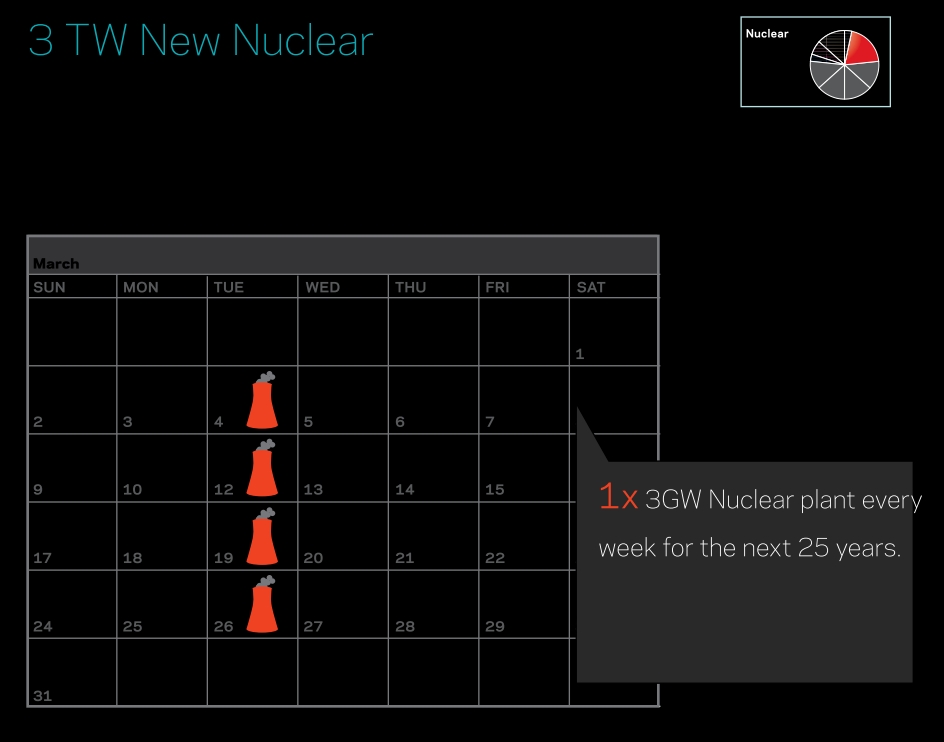If I were king, I’d make everyone in America set aside time to watch the first hour of this video. It will change the way you think. Since I’m just a blogger, I expect most people won’t, so beneath, I’ve extracted some of the key slides from Saul Griffith’s extraordinary presentation, to give a clear sense of just what an enormous task lies ahead of us this century.
[vodpod id=ExternalVideo.1011867&w=425&h=350&fv=webhost%3Dfora.tv%26clipid%3D8907%26cliptype%3Dclip]
Say we decide we want to prevent the climate from entering irreversible feedback loops that spin us into biophysical circumstances our species has never experienced. Seems reasonable, no?
To avoid those feedbacks, the Intergovernmental Panel on Climate Change recommends keeping carbon dioxide concentrations in the atmosphere beneath 450 parts per million. That is, it cannot be said enough, an extremely conservative estimate of what might be necessary. James Hansen and others have argued persuasively that 350 ppm is the better target. But Griffith works with 450ppm, and as you’ll see, that’s plenty daunting.
It turns out, to get on a trajectory to hit 450 ppm, we’re going to need to turn off most of our fossil fuel energy, end deforestation, and build about 11.5 new terawatts of clean energy capacity by 2033 (30 years out from the 2003 baseline). Woo!
There is zero chance you can imagine a terawatt of energy. The brain does not grok numbers that big. So it will help to break things down a bit.
This is what the global energy mix needs to look like in 2033 (obviously there are plenty of assumptions about the viability of various sources embedded herein):
So what do we have to work with in the way of raw materials? Here’s the total potential for different renewable energy sources (this is my favorite graphic of all time):
As you can see, surface solar is by far the biggest source of clean energy in absolute terms. Here’s how much PV we will have to build:
And of course we’ll need plenty of solar thermal:
Here’s the wind we’ll need:
We’ll have to build the hell out of some nuclear plants:
Lotta geothermal too:
Griffith, appropriately in my view, doesn’t look for much in biofuels. He sticks to the clean stuff, algae:
That’s a lot of sh*t to build! As I said, it’s “the equivalent of America’s massive industrial build-up for WWII, only across the entire globe, for 40 years straight (at least), against a faceless enemy.”
Of course we have no idea what the actual mix will end up being. There’s no predicting innovation, much less politics. But the one thing we do know is that the task ahead is enormous, so gobsmackingly big that the smart money is almost certainly on failure. If we want a chance at success we’re going to have to rethink a lot of our assumptions about consumption, economic analysis, policy design, and political strategy.
In a situation where doing too little is so likely and doing too much is virtually impossible, we’re going to have to be climate hawks. That means leaning forward, biased ever toward action, choosing opportunism over optimization and the resilient over the efficient. Every second we dither, the climb gets steeper.

